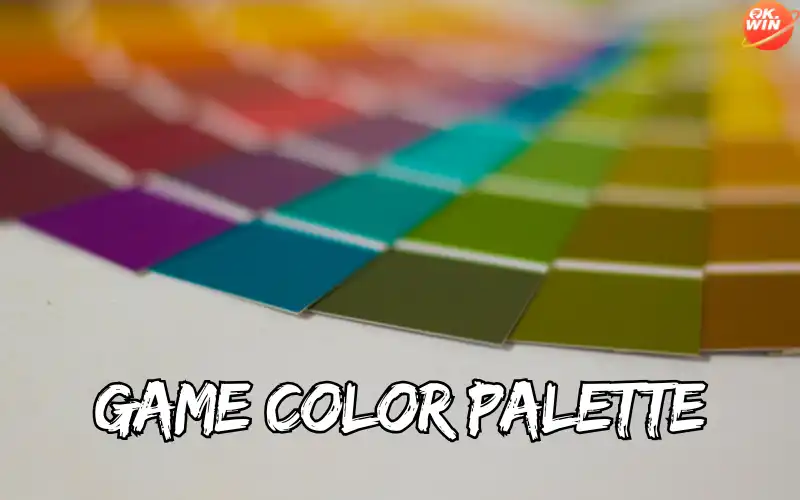In the world of game design, color plays a crucial role in creating an engaging and immersive experience for players. The right Game Color Palette can evoke emotions, set the mood, and enhance the overall aesthetic of a game. At OK Win, a leading platform for game development and design, understanding and utilizing effective color palettes can significantly elevate your projects. In this article, we will explore the top 10 game color palettes that can enhance your design at OK Win, providing inspiration and guidance for your next project.
1. Vibrant and Playful Palette
Description
The vibrant and playful palette is perfect for games aimed at younger audiences or those that require a fun and energetic vibe. This palette typically includes bright colors like electric blue, Game Color Palette sunny yellow, vivid pink, and lime green.
Usage
- Target Audience: Ideal for children’s games, casual mobile games, and party games.
- Emotional Impact: Evokes feelings of joy, excitement, and playfulness.
- Examples: Games like “Candy Crush Saga” and “Fruit Ninja” utilize vibrant colors to create an engaging atmosphere.
2. Dark and Mysterious Palette
Description
The dark and mysterious palette is characterized by deep, Game Color Palette rich colors such as dark purple, midnight blue, and charcoal gray, often accented with metallic or neon highlights.
Usage
- Target Audience: Suitable for horror games, adventure games, and mystery-themed titles.
- Emotional Impact: Creates a sense of suspense, intrigue, and tension.
- Examples: Games like “Limbo” and “Inside” effectively use dark palettes to enhance their eerie atmospheres.
3. Earthy and Natural Palette
Description
The earthy and natural palette features muted tones inspired by nature, Game Color Palette including greens, browns, and soft blues. This palette creates a calming and organic feel.
Usage
- Target Audience: Great for simulation games, farming games, and nature-themed titles.
- Emotional Impact: Evokes feelings of tranquility, harmony, and connection to nature.
- Examples: Games like “Stardew Valley” and “Terraria” utilize earthy colors to create immersive environments.
4. Retro and Vintage Palette
Description
The retro and vintage palette draws inspiration from classic games and design trends, featuring pastel colors, muted tones, and nostalgic shades like teal, mustard yellow, Game Color Palette and burnt orange.
Usage
- Target Audience: Perfect for indie games, platformers, and games with a nostalgic theme.
- Emotional Impact: Evokes feelings of nostalgia, warmth, and familiarity.
- Examples: Games like “Celeste” and “Shovel Knight” effectively use retro palettes to create a charming aesthetic.
5. Futuristic and Tech Palette
Description
The futuristic and tech palette is characterized by sleek, Game Color Palette high-contrast colors, often featuring neon shades like electric blue, bright green, and hot pink against dark backgrounds.
Usage
- Target Audience: Ideal for sci-fi games, cyberpunk themes, and technology-driven titles.
- Emotional Impact: Evokes feelings of innovation, excitement, and adventure.
- Examples: Games like “Cyberpunk 2077” and “Tron” utilize futuristic palettes to create immersive sci-fi environments.
6. Monochromatic Palette
Description
The monochromatic palette uses varying shades of a single color, creating a cohesive and harmonious look. This approach can include light and dark shades, Game Color Palette tints, and tones of the chosen color.
Usage
- Target Audience: Suitable for minimalist games, puzzle games, and artistic titles.
- Emotional Impact: Evokes feelings of simplicity, elegance, and focus.
- Examples: Games like “Monument Valley” and “The Witness” effectively use monochromatic palettes to create visually stunning experiences.
7. Pastel Palette
Description
The pastel palette features soft, light colors such as baby blue, pale pink, mint green, and lavender. This palette creates a gentle and soothing atmosphere.

Usage
- Target Audience: Great for casual games, simulation games, and games aimed at a younger audience.
- Emotional Impact: Evokes feelings of calmness, serenity, and playfulness.
- Examples: Games like “Animal Crossing” and “My Time at Portia” utilize pastel colors to create inviting environments.
8. Bold and High-Contrast Palette
Description
The bold and high-contrast palette features striking color combinations that create visual impact. This palette often includes bright primary colors and stark contrasts, Game Color Palette such as black and white.
Usage
- Target Audience: Ideal for action games, arcade games, and competitive titles.
- Emotional Impact: Evokes feelings of energy, excitement, and urgency.
- Examples: Games like “Super Mario” and “Street Fighter” effectively use bold palettes to create dynamic visuals.
9. Cool and Calming Palette
Description
The cool and calming palette features soft blues, Game Color Palette greens, and purples, creating a serene and peaceful atmosphere. This palette is often used in games that focus on relaxation and mindfulness.
Usage
- Target Audience: Suitable for meditation games, puzzle games, and casual mobile games.
- Emotional Impact: Evokes feelings of tranquility, relaxation, and focus.
- Examples: Games like “Journey” and “Flower” utilize cool palettes to create immersive and calming experiences.
10. Warm and Inviting Palette
Description
The warm and inviting palette features warm colors like reds, oranges, and yellows, creating a cozy and welcoming atmosphere. This palette is often used in games that focus on community and connection.
Usage
- Target Audience: Great for social games, family-friendly titles, and community-building games.
- Emotional Impact: Evokes feelings of warmth, happiness, and togetherness.
- Examples: Games like “Overcooked” and “The Sims” effectively use warm palettes to create inviting environments.
Tips for Choosing the Right Color Palette
When selecting a color palette for your game design at OK Win, consider the following tips:
1. Understand Your Target Audience
Different color palettes resonate with different audiences. Consider the age group, preferences, and cultural influences of your target audience when choosing a palette.
2. Align Colors with Game Theme
Ensure that the color palette aligns with the theme and mood of your game. For example, a horror game may benefit from dark and mysterious colors, Game Color Palette while a children’s game may require vibrant and playful hues.
3. Test Color Combinations
Experiment with different color combinations to find the right balance. Use design tools to visualize how colors interact and ensure they complement each other.
4. Consider Accessibility
Keep accessibility in mind when choosing colors. Ensure that your Game Color Palette is inclusive and can be easily distinguished by players with color vision deficiencies.
5. Seek Feedback
Don’t hesitate to seek feedback from peers or potential players. Their insights can help you refine your color choices and enhance the overall design of your game.
Conclusion
Color palettes play a vital role in game design, influencing the overall aesthetic and emotional impact of a game. By utilizing the top 10 game color palettes discussed in this article, you can enhance your design at OK Win and create engaging experiences for players. Whether you’re aiming for a vibrant and playful atmosphere or a dark and mysterious vibe, the right color palette can elevate your game to new heights.
As you embark on your game design journey, remember to consider your target audience, align colors with your game theme, and seek feedback to refine your choices. With the right color palette, you can create a visually stunning and immersive gaming experience that captivates players and keeps them coming back for more. So, dive into the world of color and let your creativity shine at OK Win!


